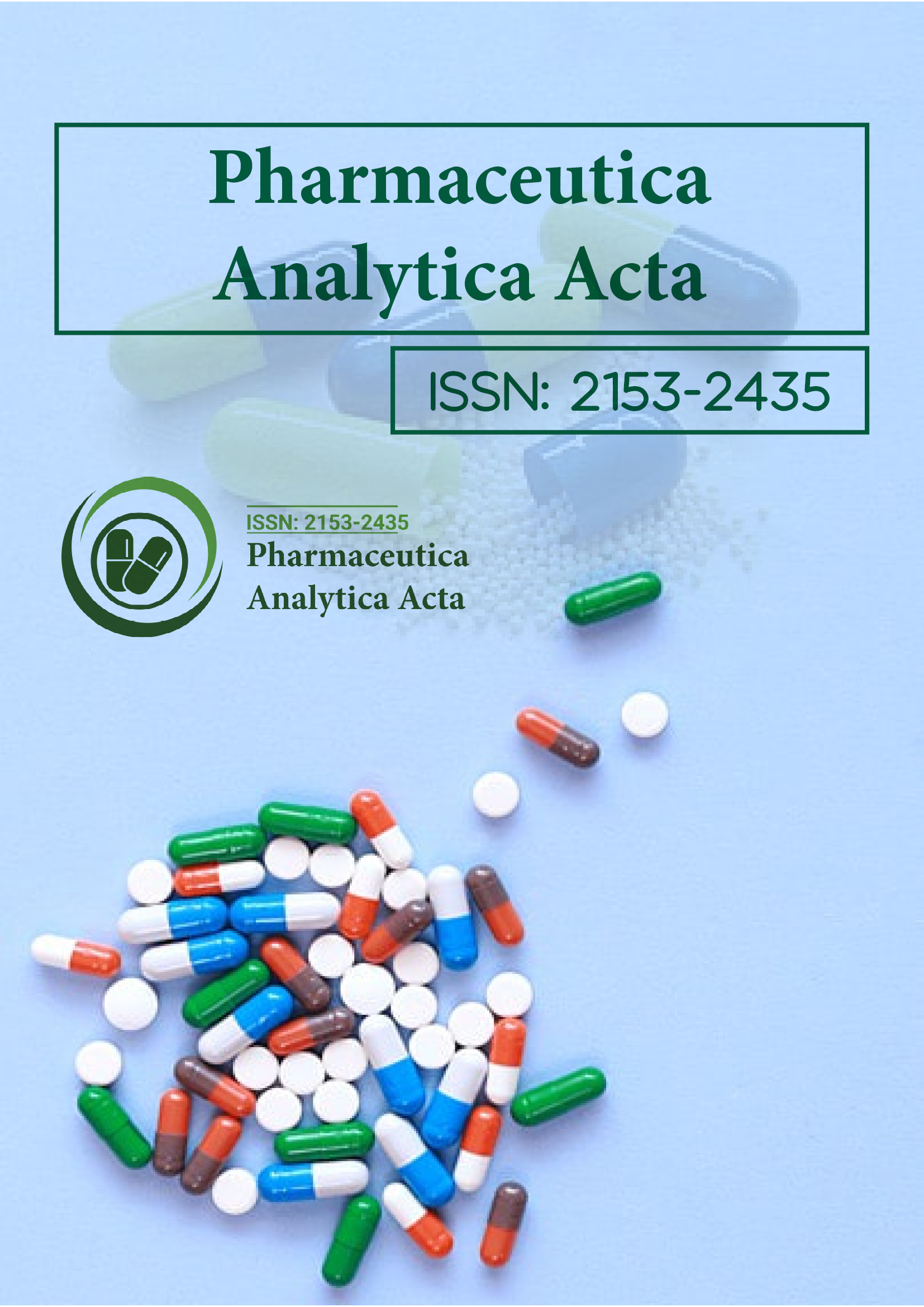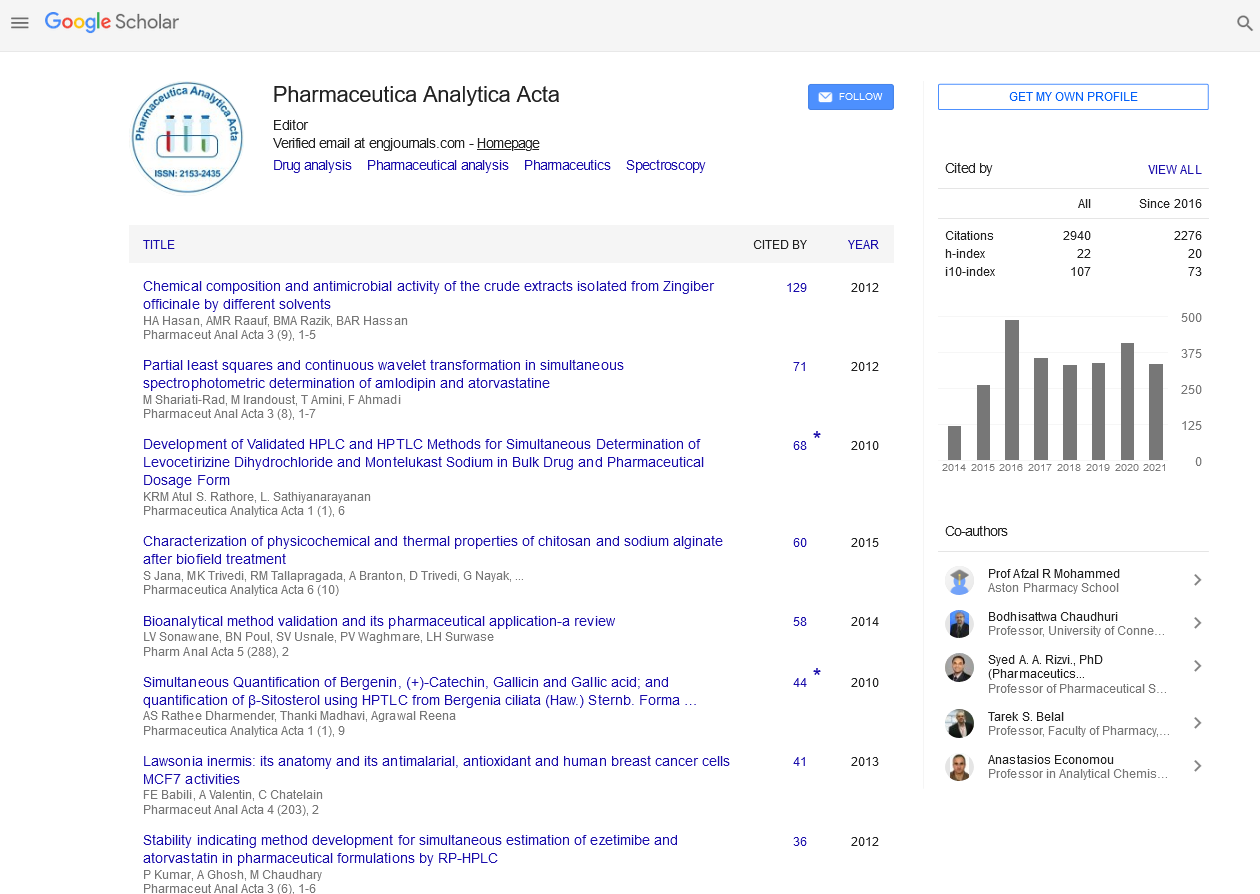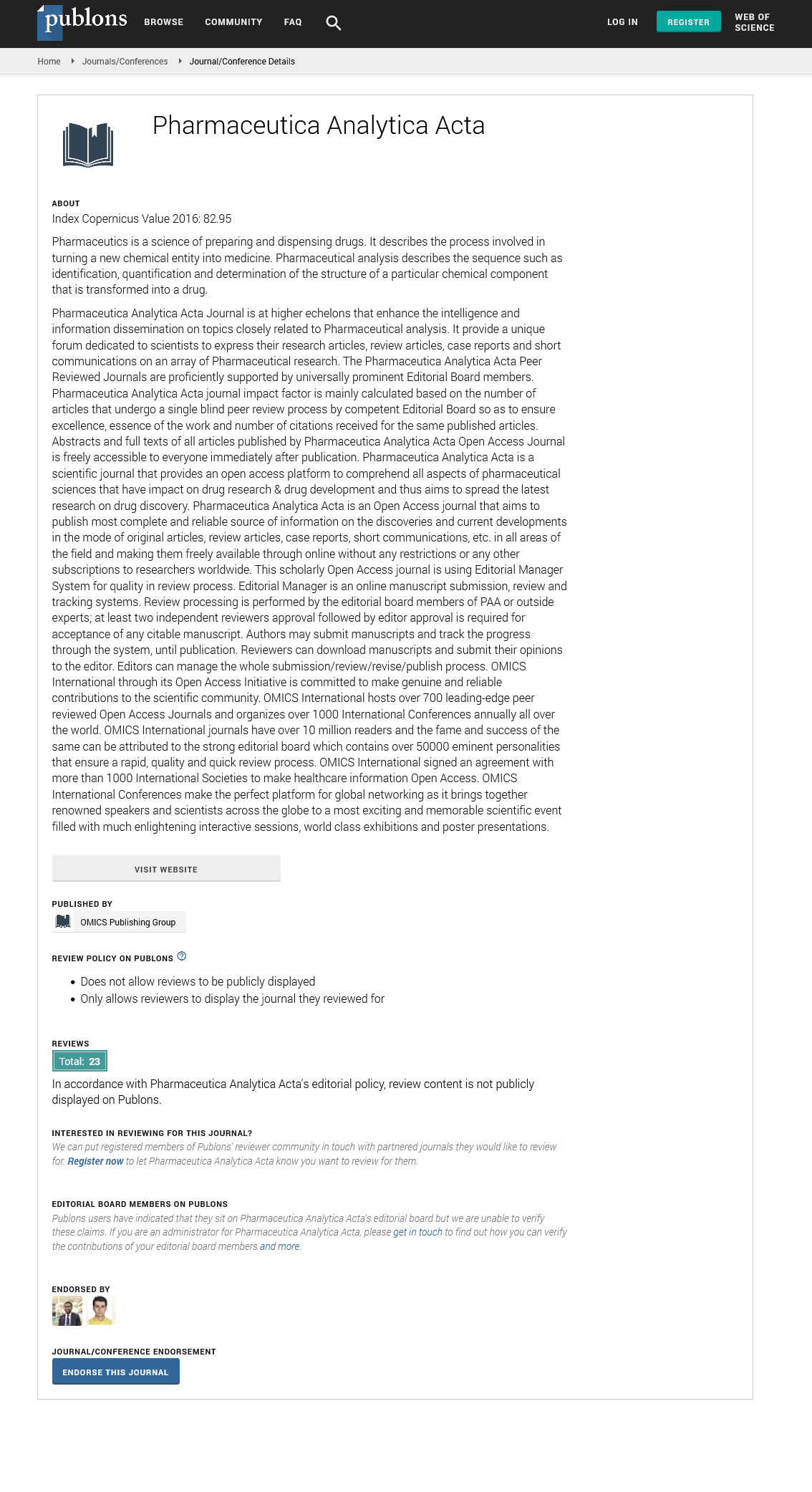Indexed In
- Open J Gate
- Genamics JournalSeek
- Academic Keys
- JournalTOCs
- The Global Impact Factor (GIF)
- China National Knowledge Infrastructure (CNKI)
- Ulrich's Periodicals Directory
- RefSeek
- Hamdard University
- EBSCO A-Z
- OCLC- WorldCat
- Publons
- Geneva Foundation for Medical Education and Research
- Euro Pub
- Google Scholar
Useful Links
Share This Page
Journal Flyer

Open Access Journals
- Agri and Aquaculture
- Biochemistry
- Bioinformatics & Systems Biology
- Business & Management
- Chemistry
- Clinical Sciences
- Engineering
- Food & Nutrition
- General Science
- Genetics & Molecular Biology
- Immunology & Microbiology
- Medical Sciences
- Neuroscience & Psychology
- Nursing & Health Care
- Pharmaceutical Sciences
Perspective - (2025) Volume 16, Issue 2
Development of New Antibiotics and Antimicrobial Agents
Fisel Lanchi*Received: 02-Nov-2023, Manuscript No. PAA-23-23712; Editor assigned: 06-Nov-2023, Pre QC No. PAA-23-23712 (PQ); Reviewed: 22-Nov-2023, QC No. PAA-23-23712; Revised: 01-Apr-2025, Manuscript No. PAA-23-23712 (R); Published: 08-Apr-2025, DOI: 10.35248/2153-2435.25.16.814
Introduction
Antibiotics have been one of the most transformative discoveries in medical history, saving countless lives by combatting bacterial infections. However, over the years, the emergence of antibioticresistant bacteria has become a global health crisis, rendering many existing antibiotics less effective. To address this urgent issue, the development of new antibiotics and antimicrobial agents has become a critical area of research.Description
The challenge of antibiotic resistance
•Increased mortality: Resistant infections are associated with higher mortality rates. Diseases that were once easily treatable, such as pneumonia and urinary tract infections, can become life threatening.
• Longer hospital stays: Patients with antibiotic-resistant infections often require longer hospital stays, leading to increased healthcare costs and a higher burden on the healthcare system.
• Limited treatment options: The diminishing effectiveness of existing antibiotics leaves healthcare professionals with limited treatment options, potentially leading to the use of last-resort antibiotics, which can further exacerbate resistance.
• Global health threat: Antibiotic resistance knows no borders and poses a significant global health threat. Resistant bacteria can spread internationally, making treatment and containment challenging.
• Economic impact: The economic impact of antibiotic resistance is substantial, including increased healthcare costs, lost productivity, and the burden of caring for patients with resistant infections.
Strategies for developing new antibiotics and antimicrobial agents
Developing new antibiotics and antimicrobial agents is a complex and multifaceted process that requires a combination of innovative science, regulatory incentives, and collaborative efforts:
•Novel drug discovery: The traditional approach to antibiotic development involves the discovery of entirely new compounds or the modification of existing ones to create novel antibiotics. This process often involves screening natural products, chemical libraries, and computational modeling.
• Repurposing existing drugs: Repurposing existing non-antibiotic drugs for their antimicrobial properties is a promising strategy. These drugs, originally developed for other purposes, may exhibit unexpected antimicrobial effects.
• Combination therapies: Combining existing antibiotics with new compounds or with non-antibiotic drugs can enhance the efficacy of treatment. This approach can help overcome resistance mechanisms and reduce the risk of resistance development.
• Targeted therapies: Identifying specific microbial vulnerabilities and targeting them with precision can lead to the development of more effective antibiotics.
• Antibacterial peptides: Antimicrobial peptides, which are naturally occurring molecules in various organisms, show promise as a source of new antibiotics. These peptides have different modes of action compared to traditional antibiotics.
• Phage therapy: Bacteriophages, viruses that infect bacteria, are being explored as a treatment for bacterial infections. Phage therapy involves using specific phages to target and kill bacteria, potentially offering a more personalized and precise approach.
• Antimicrobial stewardship: Implementing antimicrobial stewardship programs in healthcare settings is essential for responsible antibiotic use. These programs help reduce the overuse and misuse of antibiotics, which can slow the development of resistance.
Conclusion
The development of new antibiotics and antimicrobial agents is important to combat the growing threat of antibiotic resistance. While challenges exist, including regulatory hurdles and the need for innovative research, ongoing efforts are paving the way for a more resilient and sustainable approach to managing bacterial infections. The collaboration between scientists, pharmaceutical companies, regulatory agencies and global health organizations is essential in the fight against antibiotic-resistant bacteria, ensuring that effective treatments remain available to all.
Citation: Lanchi F (2025) Development of New Antibiotics and Antimicrobial Agents. Pharm Anal Acta. 16:814.
Copyright: © 2025 Lanchi F. This is an open-access article distributed under the terms of the Creative Commons Attribution License, which permits unrestricted use, distribution, and reproduction in any medium, provided the original author and source are credited.


